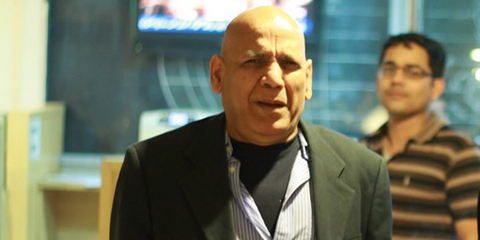Human-in-the-loop AI reshapes newsroom editing
JournalismPakistan.com | Published 1 hour ago | JP Special Report
Join our WhatsApp channel
Newsrooms worldwide are adopting human-in-the-loop AI editing tools that speed production while raising new questions about accuracy, transparency, and evolving editorial roles.Summary
NEW YORK — Major news organizations across the world are piloting human-in-the-loop AI editing systems designed to accelerate newsroom workflows without abandoning editorial oversight. These hybrid desks combine automated drafting, summarization, and verification tools with human editors who approve, refine, or reject machine suggestions. The result is a fast-moving but heavily supervised workflow that is reshaping how news is produced.
Early adopters say the appeal lies in speed and consistency. AI tools now routinely generate story outlines, suggest SEO-optimized headlines, and process large volumes of background material within seconds. Editors, however, remain responsible for accuracy, tone, and final judgment, ensuring machine output does not override newsroom standards.
Background and Adoption Trends
The shift gained momentum in late 2024 and early 2025 when major publishers began integrating internal large language models to support editorial teams. Workflow tools such as AI-powered summarizers and archive assistants have become standard in some newsrooms, allowing reporters to focus on verification and narrative quality rather than routine processing tasks.
News agencies and digital-first outlets have taken the lead. Several national and regional newsrooms now run pilot programs where AI helps with tasks such as fact-checking metadata, suggesting style fixes, and alerting editors to potential inconsistencies. Despite rapid adoption, leaders stress that human oversight is mandatory in all published material.
Case Studies and Real-World Implementation
A major legacy outlet recently rolled out an internal editing assistant that helps editors create tighter summaries and alternative headlines, while a European news agency has deployed a retrieval-augmented system that mines decades of archives to build context blocks for complex stories. Smaller regional publishers, faced with tighter budgets, are experimenting with on-premise AI models that keep data secure while providing basic editing support.
Editors participating in these pilots note that the tools are improving efficiency but require new workflows, training sessions, and clear rules governing when AI-generated content may be used. Many newsrooms have already created internal guidelines outlining data security, disclosure expectations, and responsibility for errors.
Ethics, Transparency, and Accountability
The rapid spread of AI editing raises complex ethical questions. Newsrooms are now debating how much to disclose to readers about the role AI plays in content creation. Transparency notes are becoming more common, though practices vary widely across outlets. Editors also face questions about liability: if an AI tool introduces an inaccuracy that escapes human review, determining accountability can be difficult.
Industry bodies have begun offering guidance on responsible use, warning against overreliance on automated suggestions and emphasizing the need for rigorous oversight. Many organizations are treating human-in-the-loop systems as supportive aids rather than authoritative decision-makers, reinforcing that editorial responsibility ultimately rests with humans.
Workforce and Skillset Evolution
The rise of AI-assisted editing desks is reshaping newsroom roles. Some organizations are creating new positions such as AI editors or workflow technologists who specialize in monitoring system performance and training journalists on safe usage. Reporters with data skills are increasingly valued, while editors are encouraged to develop a working understanding of how models generate and evaluate text.
Despite concerns about automation, most newsrooms say these systems are not reducing headcount but reallocating time toward higher-value editorial tasks. Many journalists report that AI tools help them handle growing volumes of information, particularly in fast-moving news cycles.
Conclusion and Outlook
As human-in-the-loop AI becomes more widely adopted, industry experts expect continued refinement of tools and clearer standards across the media sector. While challenges remain, early pilots indicate that these systems can boost accuracy and efficiency when used responsibly. The balance between innovation and trust will define how AI fits into the newsroom of the future.
KEY POINTS:
- Newsrooms worldwide are piloting AI-assisted editing systems with human oversight
- Speed and consistency drive adoption while editors maintain responsibility for accuracy
- Ethical concerns include transparency, liability, and responsible use of automation
- New roles and skills are emerging as AI becomes integrated into editorial processes
ATTRIBUTION: This story is based on industry reports, newsroom disclosures, pilot program briefings, and expert commentary.
























